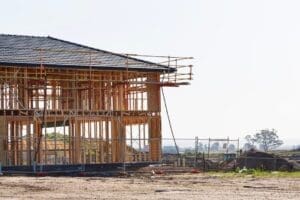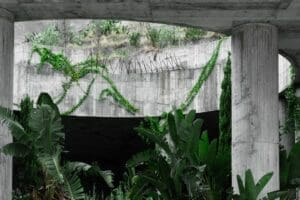A retaining wall offers numerous benefits for your property. Firstly, it helps prevent soil erosion, especially on sloped areas. This is crucial for maintaining the structural integrity of your property and preventing potential damage to your landscape. Additionally, a retaining wall can create more usable space on your property by leveling out uneven terrain, allowing you to make the most of your outdoor living area. This can be particularly beneficial for properties with limited space, as it provides an opportunity to expand and enhance the functionality of the landscape.
Furthermore, a well-designed retaining wall can add aesthetic appeal to your property. It can be used to create terraced gardens, flower beds, or seating areas, adding visual interest and enhancing the overall look of your landscape. Retaining walls also provide a sense of security and safety, especially for properties located on steep slopes or in areas prone to soil erosion. By preventing soil movement and potential landslides, retaining walls help protect your property and ensure the safety of its inhabitants. Overall, the benefits of a retaining wall are numerous, making it a valuable addition to any property.
A retaining wall also helps with water drainage, especially in areas prone to heavy rainfall or flooding. By directing water flow and preventing soil erosion, a retaining wall can help protect your property from water damage and ensure the longevity of your landscape. Additionally, a well-constructed retaining wall can increase the value of your property by enhancing its functionality and aesthetic appeal. Whether you’re looking to create more usable space, prevent soil erosion, or improve the overall look of your landscape, a retaining wall is a valuable investment for any property.
Key Takeaways
- Retaining walls prevent soil erosion and provide structural support for sloped landscapes
- Choose materials like concrete, stone, or timber based on durability, aesthetics, and budget
- Design your retaining wall to blend with your property’s style and enhance its overall appearance
- Professional installation ensures proper drainage, stability, and compliance with local building codes
- Regular maintenance, such as checking for drainage issues and repairing cracks, extends the life of your retaining wall
- Well-designed and well-maintained retaining walls can increase property value and curb appeal
- Look for a contractor with experience, positive reviews, and proper licensing for your retaining wall project
Choosing the Right Material for Your Retaining Wall
When it comes to choosing the right material for your retaining wall, there are several options to consider. One popular choice is concrete, which is known for its durability and strength. Concrete retaining walls are highly versatile and can be customized to fit the specific needs and aesthetic preferences of your property. They are also low-maintenance and can withstand the elements, making them a practical choice for long-term use.
Another option to consider is natural stone, which offers a timeless and elegant look for your retaining wall. Natural stone retaining walls can blend seamlessly with the surrounding landscape and add a touch of sophistication to your property. They are also durable and weather-resistant, making them a reliable choice for retaining wall construction. Additionally, natural stone retaining walls require minimal maintenance and can last for many years, making them a cost-effective option in the long run.
For a more budget-friendly option, timber retaining walls are worth considering. Timber retaining walls offer a rustic charm and can be easily customized to fit the specific design requirements of your property. They are also relatively easy to install and can provide an attractive solution for leveling out uneven terrain. However, it’s important to note that timber retaining walls may require more maintenance compared to other materials, as they are susceptible to rot and decay over time.
Ultimately, the right material for your retaining wall will depend on your specific needs, budget, and aesthetic preferences. It’s important to carefully consider the pros and cons of each material before making a decision, as this will ensure that you choose the best option for your property.
Designing a Retaining Wall that Complements Your Property
Designing a retaining wall that complements your property is essential for creating a cohesive and visually appealing landscape. One important consideration is the overall style of your property, as the retaining wall should seamlessly blend with the existing architecture and design elements. For example, if your property features a modern and minimalist aesthetic, a sleek and simple retaining wall design would be more suitable. On the other hand, if your property has a more traditional or rustic look, a natural stone or timber retaining wall may be a better fit.
Another important aspect to consider is the functionality of the retaining wall. It’s essential to design a retaining wall that not only looks good but also serves its intended purpose effectively. For example, if you’re looking to create terraced gardens or seating areas, the design of the retaining wall should accommodate these features and provide stability for the elevated areas. Additionally, the height and length of the retaining wall should be carefully planned to ensure that it effectively prevents soil erosion and provides adequate support for the landscape.
Furthermore, incorporating landscaping elements such as plants, flowers, and lighting can enhance the overall look of the retaining wall and complement your property. Adding greenery to the retaining wall can soften its appearance and create a more natural and inviting atmosphere. Similarly, strategic lighting can highlight the beauty of the retaining wall and create an inviting ambiance for outdoor gatherings. By carefully considering these design elements, you can create a retaining wall that not only complements your property but also enhances its overall appeal.
The Importance of Professional Installation
| Metrics | Importance |
|---|---|
| Quality of Work | Professional installation ensures high-quality workmanship |
| Safety | Professional installation reduces the risk of accidents and injuries |
| Longevity | Proper installation can extend the lifespan of the product |
| Warranty | Professional installation may be required to maintain product warranty |
| Efficiency | Professional installation ensures optimal performance and efficiency |
Professional installation is crucial for ensuring the structural integrity and longevity of your retaining wall. A qualified contractor will have the expertise and experience to properly assess the site conditions, determine the best construction methods, and ensure that the retaining wall meets local building codes and regulations. Additionally, professional installation can help prevent potential issues such as drainage problems, uneven settling, or structural failure that may arise from improper construction.
Furthermore, professional installation can save you time and effort by handling all aspects of the project from start to finish. From obtaining necessary permits to sourcing high-quality materials and equipment, a professional contractor will take care of all the details to ensure that your retaining wall is built to last. This can provide peace of mind and confidence in the quality and reliability of the finished product.
Additionally, professional installation can help you avoid costly mistakes that may arise from DIY attempts or inexperienced labor. A qualified contractor will have the knowledge and skills to address potential challenges and ensure that the retaining wall is constructed with precision and attention to detail. By investing in professional installation, you can rest assured that your retaining wall will be built to the highest standards and provide long-lasting value for your property.
Maintaining Your Retaining Wall for Longevity
Proper maintenance is essential for ensuring the longevity and performance of your retaining wall. Regular inspection is important to identify any signs of damage or wear and tear, such as cracks, bulging, or drainage issues. Addressing these issues promptly can prevent further damage and help maintain the structural integrity of the retaining wall.
Additionally, it’s important to keep the area surrounding the retaining wall free from debris and vegetation that may cause damage over time. Regularly clearing away leaves, dirt, and other debris can help prevent drainage problems and minimize the risk of erosion around the retaining wall. Similarly, trimming back overgrown plants or trees near the retaining wall can help prevent root intrusion and potential damage to the structure.
Furthermore, addressing any drainage issues promptly is crucial for preventing water damage and soil erosion around the retaining wall. Ensuring that proper drainage systems are in place and functioning effectively can help protect the integrity of the retaining wall and maintain its long-term performance.
Finally, scheduling regular maintenance with a professional contractor can help ensure that any necessary repairs or adjustments are addressed in a timely manner. This proactive approach can help extend the lifespan of your retaining wall and minimize the need for costly repairs down the line.
Enhancing Your Property’s Value with a Retaining Wall
A well-designed and properly constructed retaining wall can significantly enhance the value of your property. By creating more usable space, preventing soil erosion, and adding aesthetic appeal, a retaining wall can make your property more attractive to potential buyers. Additionally, a well-maintained retaining wall can demonstrate that the property has been cared for and maintained properly, which can be an attractive selling point for prospective buyers.
Furthermore, a retaining wall can improve the overall functionality of your property by creating level terraces for gardens, seating areas, or outdoor entertainment spaces. This added functionality can make your property more desirable and increase its market value. Additionally, a well-designed retaining wall can enhance curb appeal and create a positive first impression for potential buyers.
Moreover, investing in high-quality materials and professional installation for your retaining wall can further enhance its value. A durable and well-constructed retaining wall will provide long-term benefits for your property and demonstrate quality craftsmanship to potential buyers. By enhancing your property’s value with a retaining wall, you can maximize its potential in the real estate market and attract discerning buyers who appreciate the added benefits of this valuable feature.
Finding the Right Contractor for Your Retaining Wall Project
Finding the right contractor for your retaining wall project is essential for ensuring its success and longevity. It’s important to research potential contractors thoroughly and consider factors such as experience, expertise, reputation, and portfolio of past projects. Look for contractors who specialize in retaining wall construction and have a proven track record of delivering high-quality results.
Additionally, it’s important to verify that the contractor is licensed, insured, and bonded to protect yourself from potential liability issues or financial risks. A reputable contractor will have all necessary credentials in place and be able to provide proof of insurance coverage for their work.
Furthermore, obtaining multiple quotes from different contractors can help you compare costs and services to find the best fit for your project. However, it’s important to prioritize quality over price when choosing a contractor for your retaining wall project. Investing in a qualified and experienced contractor may require a higher upfront cost but will ultimately provide greater value in terms of quality construction and long-term performance.
Finally, don’t hesitate to ask for references from past clients or visit completed projects in person to assess the quality of workmanship firsthand. This will give you valuable insight into the contractor’s capabilities and help you make an informed decision about who to trust with your retaining wall project.
In conclusion, a well-designed and properly constructed retaining wall offers numerous benefits for any property. From preventing soil erosion to creating more usable space and enhancing aesthetic appeal, a retaining wall is a valuable investment that can significantly improve the functionality and value of your property. By carefully considering factors such as material selection, design elements, professional installation, maintenance practices, and contractor selection, you can ensure that your retaining wall project is successful and provides long-lasting benefits for your property. Whether you’re looking to enhance your outdoor living space or increase the market value of your property, a well-executed retaining wall can make a significant impact on both aesthetics and functionality.
If you’re considering installing a retaining wall in McKinney, you may also be interested in learning about the benefits of concrete driveways in Frisco. Lucky’s Concrete Services explains in their blog post the advantages of choosing a concrete driveway for your home, including durability, low maintenance, and aesthetic appeal. Understanding the benefits of concrete driveways can help you make informed decisions about other concrete features, such as retaining walls, for your property.
FAQs
What is a retaining wall?
A retaining wall is a structure designed to hold back soil and prevent it from eroding or collapsing. It is commonly used in landscaping to create level areas on sloped terrain.
Why would I need a retaining wall in McKinney?
In McKinney, Texas, retaining walls are often needed to prevent soil erosion on sloped properties, create usable space on uneven terrain, and improve the overall aesthetics of a landscape.
What materials are commonly used for retaining walls in McKinney?
Common materials for retaining walls in McKinney include concrete blocks, natural stone, brick, and timber. The choice of material depends on the specific needs of the project and the desired aesthetic.
Do I need a permit to build a retaining wall in McKinney?
In McKinney, a permit is typically required for the construction of a retaining wall that is over a certain height, usually around 4 feet. It is important to check with the local building department to determine the specific requirements for your project.
How long does it take to build a retaining wall in McKinney?
The time it takes to build a retaining wall in McKinney depends on the size and complexity of the project. A small, simple retaining wall may take a few days to complete, while a larger, more intricate wall could take several weeks.
What are the benefits of hiring a professional for retaining wall construction in McKinney?
Hiring a professional for retaining wall construction in McKinney ensures that the wall is built to code, meets local regulations, and is structurally sound. Professionals also have the expertise and experience to design and construct a retaining wall that is both functional and visually appealing.


















